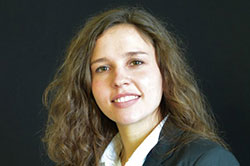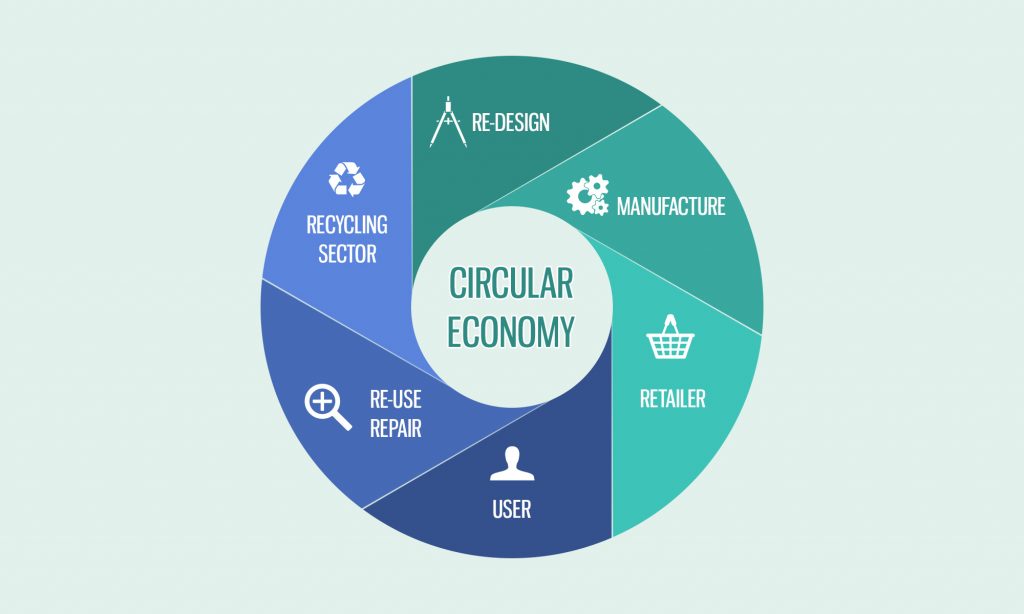Waste materials turned into resources - the idea of a circular economy

So far, our economic model has been based on the idea of linear growth. Production and consumption followed a simple principle: resources were obtained, processed, used and, for the most part, discarded after their useful life. At the end of the product life cycle, hence, came disposal, typically in a waste incineration plant or at a landfill. Of course, this linear model can only work if an unlimited amount of resources is available.
With our ever-growing population, we must assume that demand will increase rapidly in the future while the availability of renewable and non-renewable raw materials is limited. This is due to a simple fact: we live on a planet with finite resources – thus, infinite growth is impossible! The scarcity of resources, imminent future resource conflicts as well as the enshrined principle of sustainability have motivated the European Commission to reshape the European economy into a circuit model.
The idea of a circular economy
The idea of a circular economy has always been part of human economies and originates from traditional agriculture in which both the waste from products as well as the production residues were directly returned into production. The modern concept of a circular economy was introduced by the British economist David W. Pearce in 1990. It aims at returning the raw materials used beyond the life cycle of a product completely into the production process. Environmental and health effects should be avoided as far as possible, and inefficient use of resources and unnecessary resource dependence should be reduced.
The EU’s circular economy package
On 18 December 2017, the EU Commission decided on the new Circuit Economy Package, whose analysis and approval by the Council is planned for the first quarter of 2018. Its aim is to separate resource consumption and the environmental impact of these economic activities. The contribution of waste management to that is essential, de facto, there must be a complete change of thinking – we must turn our backs on the currently prevailing opinion of “putting the dirt away”, and waste prevention, re-use, recycling and material or thermal use must go hand in hand. Procedures in order to recover, separate and recycle products must be established, and product design must follow the principles of sustainability. Ultimately, the waste management industry in cooperation with the industrial sector must produce secondary raw materials, which can be fed back into the production process easily.
Ambitious goals
In terms of municipal waste, the European Commission has defined ambitious goals: the proportion of landfilled, not pre-treated municipal waste should be minimized to a maximum of 10 per cent by 2030. Concomitant with that, at least 65 % of municipal waste should find its way into re-use or recycling plants. In the field of packaging waste, the goal is to reuse or recycle at least 75 % of packaging waste by 2030. (EPRS, 2017)
Focus on waste prevention
Waste prevention is the top priority in the European waste hierarchy. This approach implies that products are used for as long as possible and thus the generation of waste is reduced. To this end, efficient repair networks must be established across national borders, and the planned obsolescence must finally be legally constrained. Also, a trade in waste has developed in the EU over the years, which, for example, leads to the existing waste incineration plants always being used to capacity. We could also establish an integrated recycling infrastructure, especially in relation to high-quality waste streams, such as critical raw materials, which occur in small volumes only.
Still a lot of catching up to do
The EU’s waste management presents itself as a very heterogeneous field. While six member states have already reached the landfilling goal for 2030, approximately half of the member states still have a lot of catching up to do – with landfilling rates of over 50 %. What is important is to ensure that there is no shift from landfill to incineration at the expense of recycling, because currently 35 % of municipal waste ends up in thermal treatment plants in Denmark, Sweden, the Netherlands, Belgium and France. (EPRS, 2012)
In order to be able to meet the recycling goals of the European Commission, a reorientation of the waste management industry must take place. Appropriate separation technologies must be developed and implemented, the collection and sorting systems must be adapted and further developed and the necessary infrastructure must be established. New processes must be developed and reviewed, and technologies need to be analysed and, in the long term, viable secondary markets must be created and developed.
Opportunity for the waste management industry
It is important that the waste management industry does not consider this reorientation a threat to their economic sector but rather an opportunity for new sales markets. The ideal solution to meet these changes and challenges is a complex yet easily understandable and user-friendly software solution based on state-of-the-art technology. Using an integrated system in which both material and recycling flows are mapped and stocks are reported as quickly as possible and, in addition, authorities data, customer contacts, management and administration are linked with each other.
The COSMO CONSULT experts have been dealing with the processes of the waste management and recycling industry since the beginning of the millennium, and can offer support with “best practice” approaches thanks to their many years of experience in international projects. New processes can thus be understood and implemented more easily, and markets can be analysed and evaluated. The path from landfilling and incineration of waste towards recovery and recycling can thus offer many opportunities for the waste management industry.
cc|environmental services
More details about the industry solution for the waste management and recycling industry.
About the Author: Anna Herist

Anna Theresa Herist works as a Junior Application Consultant in the ERP Environmental division with COSMO CONSULT (formerly FWI). In autumn 2017, she completed her diploma studies of Environmental and Bioresources Management at the University of Natural Resources and Life Sciences, Vienna, and has recently joined ERP consulting.
